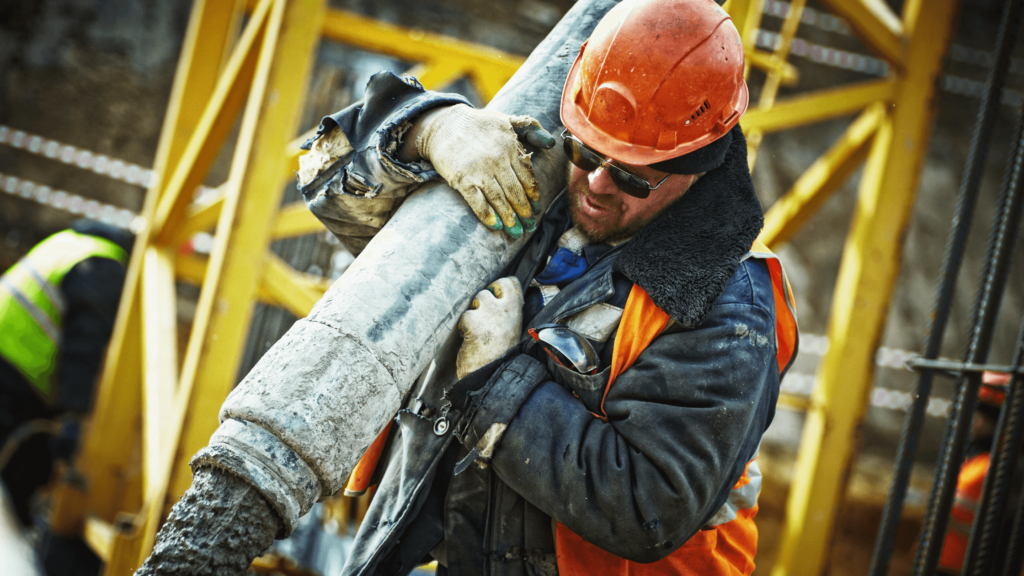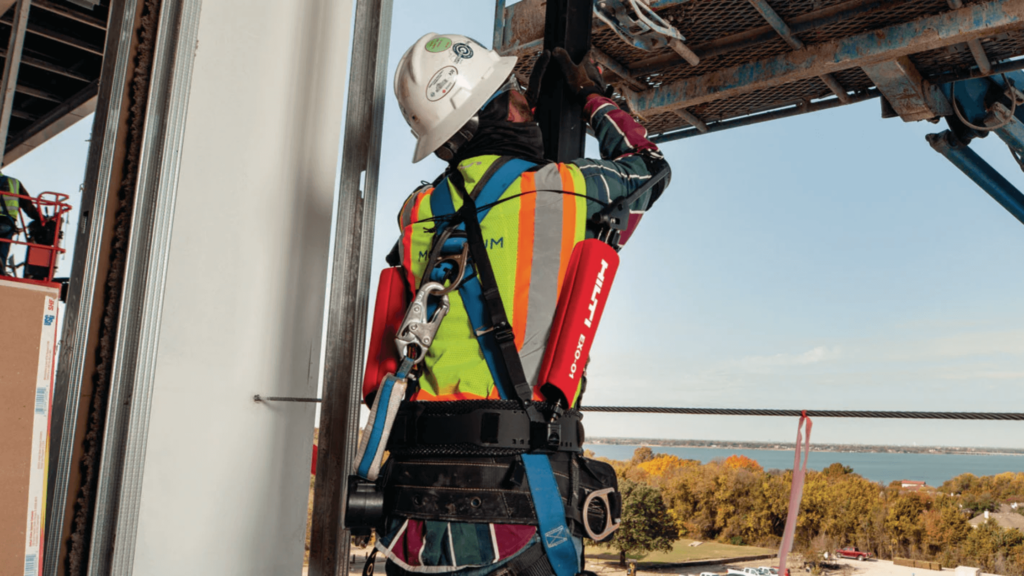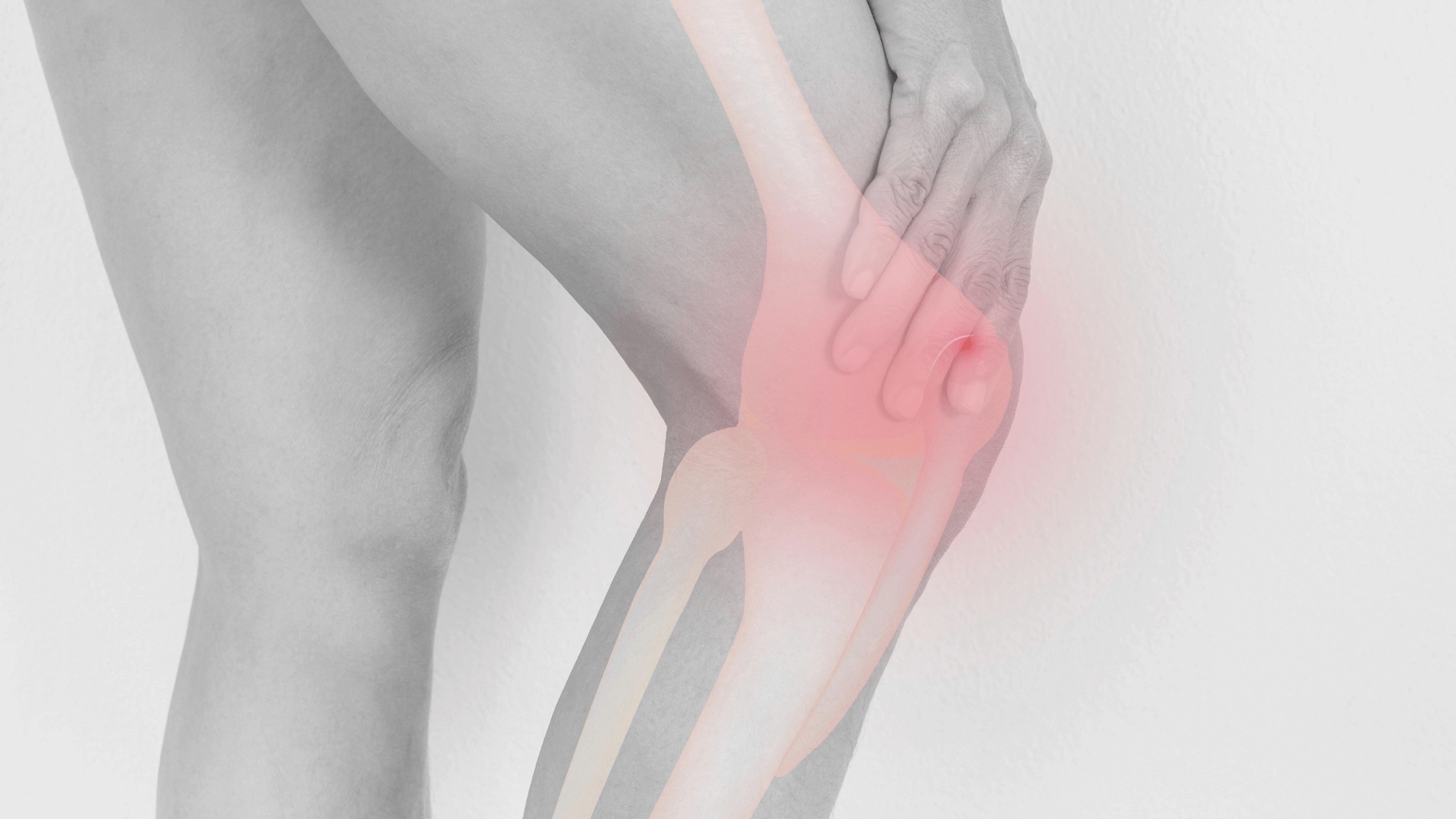Musculoskeletal disorders (MSDs) are a common and often debilitating issue affecting a wide range of industries, with construction workers being particularly vulnerable. In the U.S. alone, 30% of all cases involving days away from work are due to MSDs, with the construction industry being in the top five for reported cases. These disorders, including sprains, strains, and carpal tunnel syndrome, cause immense physical pain and lead to reduced productivity and increased absenteeism.
Common musculoskeletal disorders in the construction industry
Musculoskeletal disorders are a leading cause of nonfatal injuries in the construction sector, often resulting from repetitive motion, overexertion, and awkward postures. These injuries can affect muscles, tendons, nerves, and joints, leading to various conditions such as sprains, strains, carpal tunnel syndrome, and herniated discs.
In the construction industry, MSDs account for over 20% of all nonfatal injuries while also having one of the statistically highest rates of self-reported non-fatal injuries compared to the all-industry average of 2,640 per 100,000 workers. However, this is highly variable and dependent on the type of construction job. For instance, specialty trades like plumbing, heating, and air conditioning have a higher frequency of non-fatal injuries.
According to the CPWR – The Center for Construction Research and Training, these disorders are particularly prevalent due to the physically demanding nature of construction work, with a high incidence of repetitive strain injuries and overexertion. The most common types of MSDs in construction include:
Lower back pain
One of the most common MSDs, lower back pain is often caused by heavy lifting, bending, and twisting motions. Construction workers frequently engage in these activities, making them particularly susceptible to this condition. Chronic back pain can severely impact a worker’s ability to perform tasks and may lead to long-term disability.
Carpal tunnel syndrome
This condition involves the compression of the median nerve in the wrist, often resulting from repetitive hand and wrist movements. It is commonly seen in workers who use hand tools extensively, such as electricians and plumbers.
Tendinitis
Tendinitis is the inflammation of tendons, often occurring in the shoulders, elbows, and knees. It is frequently caused by repetitive motions and overuse, which are common in construction tasks such as hammering, lifting, and climbing.
Arthritis
This condition affects the joints and can be exacerbated by the physical demands of construction work. Repeated stress on joints from activities like kneeling or heavy lifting can increase the risk of developing arthritis.
Neck Pain (Cervicalgia)
Prolonged overhead work, such as painting or installing ceiling fixtures, can strain the neck muscles and lead to cervicalgia. This condition is characterized by pain and discomfort in the neck area, often radiating to the shoulders and upper back.
Risk factors for musculoskeletal disorders in construction

MSDs in the construction industry are influenced by various risk factors, often stemming from the job’s physical demands. Understanding these factors is crucial for implementing preventive measures and protecting workers from injury.
1. Use of hand tools and vibration (hand and wrist)
- Construction workers frequently use hand tools that can cause significant vibration exposure. This vibration, particularly when using tools like jackhammers and drills, can lead to conditions like hand-arm vibration syndrome and carpal tunnel syndrome. Continuous exposure to these vibrations can cause nerve damage and affect the blood vessels, muscles, and joints in the hands and arms.
2. Frequent overhead work (shoulders)
- Tasks that require workers to lift materials or work overhead, such as installing ceiling fixtures or painting, put stress on the shoulders. These actions can lead to tendinitis and rotator cuff injuries due to the repetitive lifting of arms above shoulder height, which strains the shoulder muscles and tendons.
3. Heavy prolonged carries (neck and upper back)
- Carrying heavy loads for extended periods can strain the neck and upper back. Workers often find themselves in awkward positions, leading to muscle fatigue and discomfort. The weight and positioning of these loads can exacerbate the risk of musculoskeletal injuries, particularly if the loads are not properly balanced or if posture is compromised.
4. Twisting, awkward body postures, & unequal lifting (low back)
- Lifting heavy objects, especially when combined with twisting or awkward postures, significantly increases the risk of lower back injuries. The force required to lift and move heavy items, often compounded by bending or twisting motions, can lead to disc herniation and chronic back pain. Unequal lifting, where the load is unevenly distributed, can also stress the spine more.
5. Constant kneeling and bending (hips and knees)
- Many construction tasks require prolonged kneeling and bending, which can stress the knees and hips. These positions can lead to conditions such as bursitis and knee osteoarthritis. The repetitive nature of these movements, coupled with the hard surfaces often encountered on construction sites, exacerbates the risk of injury.
6. Repetitive movements and static postures
- Repetitive movements, such as continuous hammering or screwing, can lead to repetitive strain injuries (RSIs) in various parts of the body, including the hands, wrists, and shoulders. Additionally, static postures, where workers maintain the same position for an extended period, can cause muscle fatigue and discomfort, particularly in the lower back and neck.
The problem with musculoskeletal disorders
The costs associated with these disorders are substantial, including direct costs like medical expenses and compensation claims and indirect costs such as lost productivity and the need for replacement workers.
To put this into perspective, nearly half a million workers suffered from new or long-standing work-related MSDs in 2022/23 and, on average, took nine days off to recover. The estimated impact on businesses is a staggering 3.5 million working days lost due to work-related injuries, with the total cost reaching a whopping $45 to $54 billion annually. These costs are not just monetary; they also reflect the human toll, with affected workers experiencing pain, disability, and reduced quality of life.
Moreover, the presence of musculoskeletal disorders can significantly lower productivity. Workers suffering from these conditions may work at a reduced capacity or may need to take additional time off in the future, leading to delays in project completion and increased costs for employers. Studies show that MSD cases require 38% more lost workdays compared to other injuries, further underscoring the economic impact.
Put simply, addressing MSDs in the construction industry is crucial for improving worker health and safety, maintaining operational efficiency, and reducing financial losses. Implementing preventive measures, such as ergonomic assessments, proper training, and supportive technologies, can help mitigate these risks and enhance workplace well-being.
Tips for maintaining musculoskeletal health in construction

Proper training in safety
Workers should receive comprehensive training on safe lifting techniques, proper equipment use, and ergonomic best practices. This includes teaching them to lift with their legs instead of their backs, keeping the load close to the body, and avoiding twisting motions while carrying heavy objects. Such training helps reduce the risk of injuries from improper handling of materials and equipment.
Integrate technology and ergonomic solutions
Advanced technologies, such as exoskeletons, can provide additional support and reduce workers’ physical strain. Ergonomically designed tools and equipment can also minimize the risk of repetitive strain injuries. For instance, using tools that reduce vibration and improve grip can protect workers from conditions like hand-arm vibration syndrome and carpal tunnel syndrome.
Identify problems and reduce exposure
Regular risk assessments and workplace evaluations can help identify potential hazards that may lead to MSDs. Once identified, steps should be taken to minimize exposure to these risks. For example, adjusting the height of workstations, providing proper seating, and ensuring workers have access to tools that minimize awkward postures can significantly reduce the likelihood of injury.
Support health and wellness programs
Encouraging a healthy lifestyle both on and off the job site is crucial. Employers can support this by providing access to wellness programs that include physical fitness, nutrition counseling, and mental health resources. Adequate rest, hydration, and a balanced diet are essential for maintaining energy levels and reducing fatigue, which can contribute to accidents and injuries. Moreover, regular physical activity can strengthen muscles and improve flexibility, further protecting against MSDs.
Encourage breaks and movement
Construction workers should take regular breaks to avoid prolonged static postures, which can lead to muscle fatigue and discomfort. Encouraging workers to stretch and move around during breaks can help alleviate muscle and joint tension, reducing the risk of developing musculoskeletal disorders.
Bottom line
While the physical demands of construction are inevitable, some factors can be controlled or reduced to prevent workers from developing serious conditions like lower back pain, carpal tunnel syndrome, and tendinitis.
Implementing effective safety training, integrating ergonomic solutions, and promoting health and wellness programs are essential strategies for preventing MSDs. By implementing these strategies, construction companies can create a safer work environment, reduce medical costs, and improve their workers’ overall health and productivity.
It’s not just about preventing injuries but also fostering a culture of health and safety that prioritizes the well-being of every employee.



5 comments